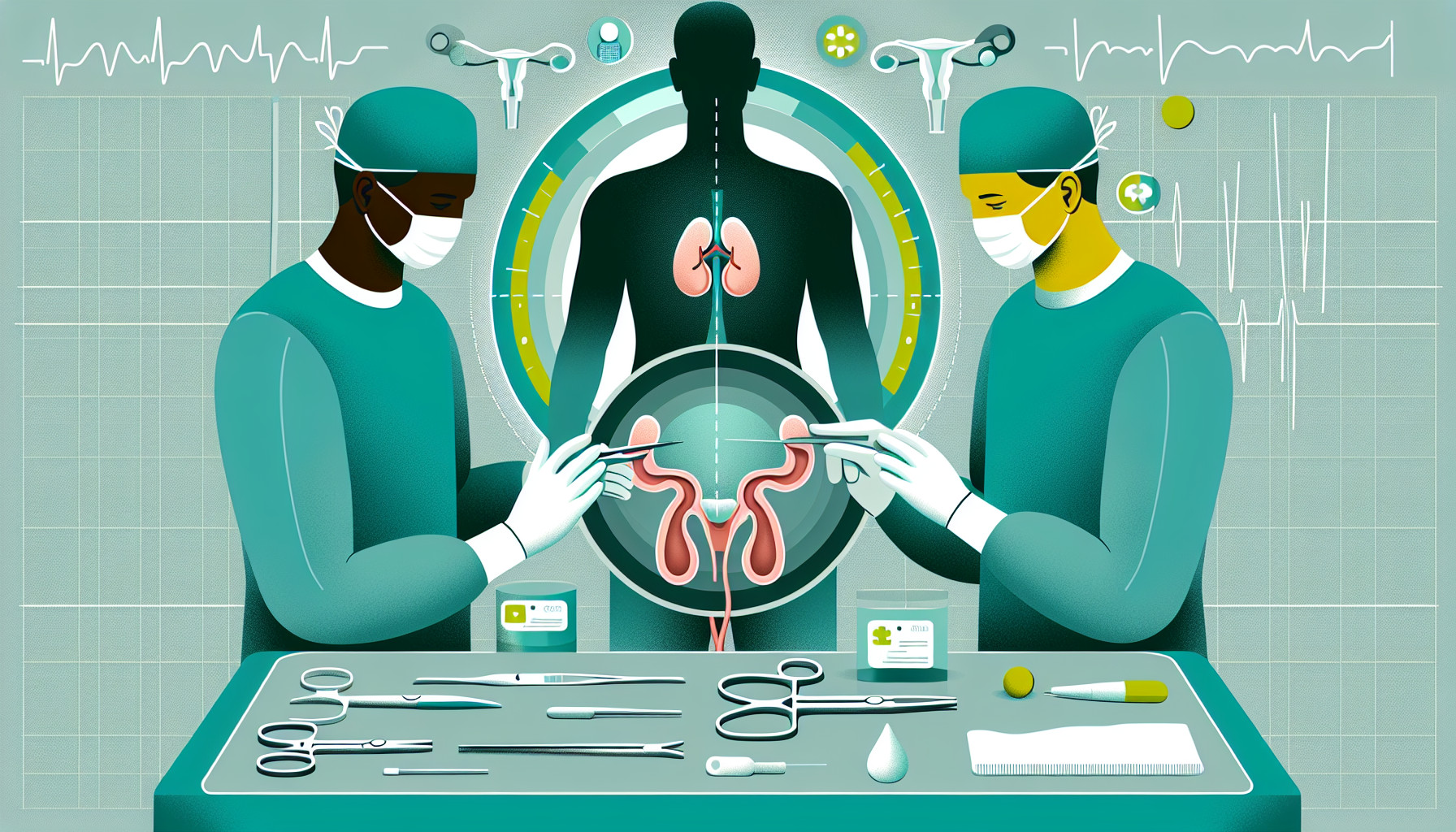Our Summary
This research paper is about a surgical procedure called robot-assisted radical cystectomy (RARC), which is used to treat bladder cancer. Since it was first introduced in 2003, RARC has quickly become a common procedure in urology. Various studies and reports, along with three major clinical trials, have shown that this robotic surgery is safe and effective. Results from another clinical trial, the RAZOR, will be available in 2016-2017 to provide more evidence for the use of RARC in the treatment of bladder cancer.
FAQs
- What is robot-assisted radical cystectomy (RARC)?
- What evidence supports the safety and efficacy of robot-assisted radical cystectomy (RARC)?
- What is the RAZOR RCT and how will its results impact the use of RARC?
Doctor’s Tip
One helpful tip a doctor might tell a patient about cystectomy is to follow post-operative care instructions closely, including proper wound care, pain management, and follow-up appointments to monitor for any complications. It is also important to maintain a healthy lifestyle, including regular exercise and a balanced diet, to aid in recovery and overall well-being. Additionally, it is important to communicate any concerns or changes in symptoms to your healthcare provider promptly.
Suitable For
Patients who are typically recommended for cystectomy are those who have bladder cancer that has not responded to other treatments, such as chemotherapy or radiation therapy. Additionally, patients with muscle-invasive bladder cancer or high-risk non-muscle invasive bladder cancer may also be candidates for cystectomy. Other factors that may influence the recommendation for cystectomy include the size and location of the tumor, the patient’s overall health and fitness for surgery, and the presence of any other underlying medical conditions.
Timeline
Before cystectomy:
- Diagnosis of bladder cancer
- Discussion with healthcare provider about treatment options, including cystectomy
- Preoperative evaluations and tests to assess overall health and fitness for surgery
- Counseling and education on the procedure and potential risks and benefits
- Preoperative preparations, such as bowel preparation and fasting
After cystectomy:
- Recovery period in the hospital, typically lasting several days to a week
- Monitoring for complications, such as infection or blood clots
- Rehabilitation and physical therapy to regain strength and function
- Adjustment to changes in urinary function, potentially requiring the use of a urinary diversion
- Follow-up appointments with healthcare provider for monitoring and surveillance of cancer recurrence.
What to Ask Your Doctor
- What is a cystectomy and why is it being recommended for me?
- What are the potential risks and complications associated with a cystectomy?
- What are the different types of cystectomy procedures available, including robot-assisted radical cystectomy (RARC)?
- How experienced is the surgical team in performing cystectomies, specifically RARC?
- What is the expected recovery time and potential side effects after a cystectomy?
- Will I need any additional treatments or follow-up care after the procedure?
- What is the success rate of RARC compared to other cystectomy procedures?
- Are there any alternative treatment options available besides cystectomy?
- How will a cystectomy impact my quality of life and long-term prognosis?
- Are there any clinical trials or new developments in cystectomy procedures that I should be aware of?
Reference
Authors: Kurpad R, Woods M. Journal: J Surg Oncol. 2015 Dec;112(7):728-35. doi: 10.1002/jso.24009. Epub 2015 Aug 27. PMID: 26310514
